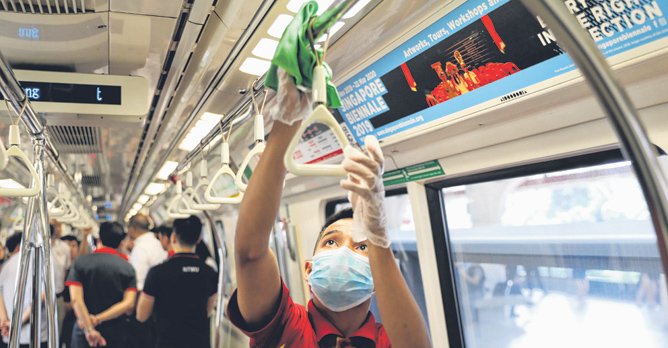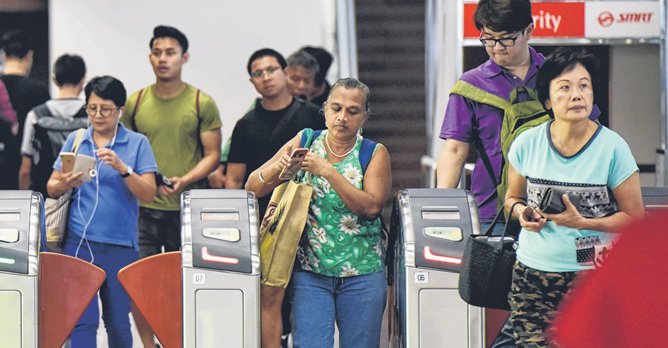Ridership on trains down 80% since start of outbreak
05 May 2020|156 views
Ridership on trains has fallen by 80% since the coronavirus outbreak started in late January, Transport Minister Khaw Boon Wan said yesterday.
The drop was four times that during the Severe Acute Respiratory Syndrome (SARS) crisis, which saw demand fall by only 20% when the SARS outbreak was at its worst, Mr. Khaw said on Facebook, after visiting Bishan MRT station earlier in the morning. "One upside is that it allows us to observe safe distancing," he added.
Trains, train stations, buses, bus stops and interchanges are now marked with safe distancing stickers, and standing spaces and seats that should be avoided have also been marked out.
But ridership is expected to increase as circuit breaker measures are eased in the coming weeks and more Singaporeans start to take public transport again as they resume activities in their workplaces. This would make safe distancing very challenging, especially during peak hours, Mr. Khaw said.
"We will need everyone's help to manage and flatten the peak-hour demand - employers should continue to stagger working hours and encourage telecommuting. Donning a mask on public transport is absolutely necessary, as in Taipei, Hong Kong, Seoul, Spain and many other cities. And if you are unwell, please stay home."

On April 6, a day before the circuit breaker measures kicked in, the Land Transport Authority (LTA) said public transport ridership had halved since the start of the COVID-19 outbreak in January.
In the middle of last month, LTA said daily bus ridership nosedived by more than 71% and train ridership by 75% compared with before the pandemic. Trains and buses are also running at lower frequencies because of lower demand. Based on LTA's statistics for last year, a daily average of 3.59 million trips were made on trains and 4.09 million trips on buses. Combined, they pushed public transport ridership to yet another record average of 7.69 million trips a day last year.
Ridership on trains has fallen by 80% since the coronavirus outbreak started in late January, Transport Minister Khaw Boon Wan said yesterday.
The drop was four times that during the Severe Acute Respiratory Syndrome (SARS) crisis, which saw demand fall by only 20% when the SARS outbreak was at its worst, Mr. Khaw said on Facebook, after visiting Bishan MRT station earlier in the morning. "One upside is that it allows us to observe safe distancing," he added.
Trains, train stations, buses, bus stops and interchanges are now marked with safe distancing stickers, and standing spaces and seats that should be avoided have also been marked out.
But ridership is expected to increase as circuit breaker measures are eased in the coming weeks and more Singaporeans start to take public transport again as they resume activities in their workplaces. This would make safe distancing very challenging, especially during peak hours, Mr. Khaw said.
"We will need everyone's help to manage and flatten the peak-hour demand - employers should continue to stagger working hours and encourage telecommuting. Donning a mask on public transport is absolutely necessary, as in Taipei, Hong Kong, Seoul, Spain and many other cities. And if you are unwell, please stay home."

On April 6, a day before the circuit breaker measures kicked in, the Land Transport Authority (LTA) said public transport ridership had halved since the start of the COVID-19 outbreak in January.
In the middle of last month, LTA said daily bus ridership nosedived by more than 71% and train ridership by 75% compared with before the pandemic. Trains and buses are also running at lower frequencies because of lower demand. Based on LTA's statistics for last year, a daily average of 3.59 million trips were made on trains and 4.09 million trips on buses. Combined, they pushed public transport ridership to yet another record average of 7.69 million trips a day last year.
Latest COE Prices
November 2025 | 1st BIDDING
NEXT TENDER: 19 Nov 2025
CAT A$110,002
CAT B$115,001
CAT C$76,000
CAT E$121,010
View Full Results Thank You For Your Subscription.




















